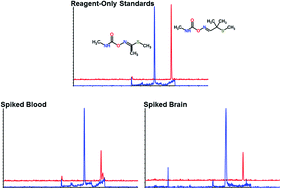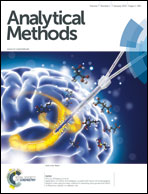QuEChERS-based approach toward the analysis of two insecticides, methomyl and aldicarb, in blood and brain tissue
Abstract
QuEChERS has been widely utilized for the analysis of pesticides in produce, but it has not been as widely used in clinical test specimens, especially for smaller, sub-gram sample sizes. This study describes the application of a miniaturized QuEChERS methodology toward the analysis of two insecticides, methomyl and aldicarb, in guinea pig blood and brain tissue. Matrix effects and absolute recoveries were investigated for both analytes in the two matrices. While the matrix effects of methomyl in both matrices were minimal at most levels (i.e., from −20% to 20%), aldicarb experienced signal suppression under the described conditions (mean of −47%). However, the matrix effects were not cause for concern due to the sensitivity of the method and the use of matrix-matched standards. The precision and accuracy of the method were excellent over a range of concentrations that spanned three orders of magnitude. The limits of detection (LOD) for both carbamates were determined to be 0.1 ng mL−1 in blood and 0.2 ng g−1 in brain. Other validation parameters, such as linearity, accuracy, precision, and recovery, were also satisfactory in the blood and brain tissue. This method was demonstrated to be sensitive and reproducible, and it should be applicable to the analysis of a wide range of compounds of interest in sub-gram- and sub-milliliter-sized clinical and toxicology specimens.


 Please wait while we load your content...
Please wait while we load your content...